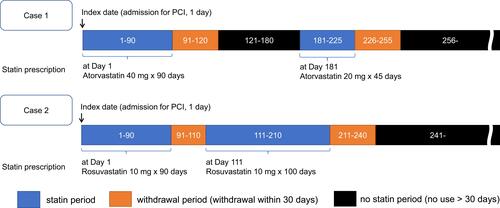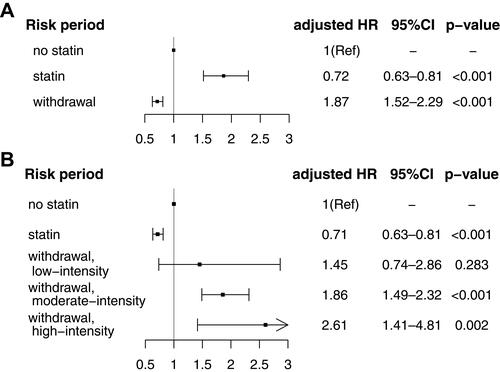Figures & data
Figure 1 Examples of the definition of risk periods according to statin treatment.
Abbreviation: PCI, percutaneous coronary intervention.

Table 1 Clinical Characteristics of Patients Who Received Percutaneous Coronary Intervention
Table 2 Result of Cox Regression Analyses for Primary Outcome After Percutaneous Coronary Intervention
Table 3 Secondary Outcome Analysis for Individual Outcome
Figure 2 Risk for primary outcome according to statin treatment. (A) Adjusted HR for “statin use period” and “withdrawal period” compared to the “no statin period” (Ref). (B) Adjusted HR for statin withdrawal for “low-intensity”, “moderate-intensity”, and “high-intensity” statins compared to the “no statin period” (Ref). Data are derived from multivariate time-dependent Cox proportional hazard regression analysis adjusted for the variables listed in
Abbreviations: CI, confidence interval; HR, hazard ratio.

